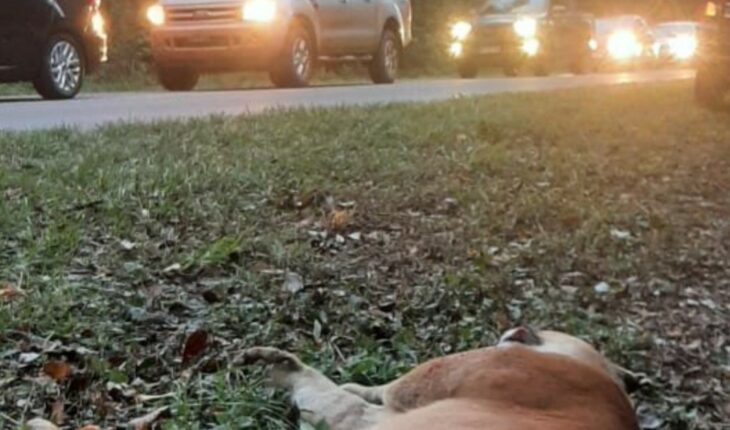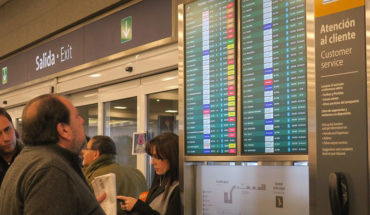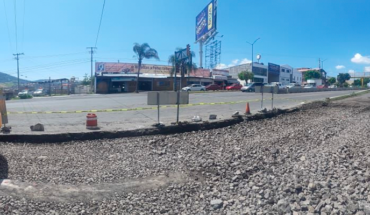The missionary jungle is in mourning: an adult male puma, between 45 and 50 kg, was run over on National Route 101, near the junction with the RN12, within the Iguazú National Park. The incident occurred during the afternoon of July 13, 50 meters from one of the signposted sites, where the maximum speed is set at 40 km / h.” From Vida Silvestre we regret the loss of this individual that should be a turning point, and shows us the necessary urgency to implement concrete actions – fines, pasafaunas, ecoducts, vertical and horizontal signage – and measures to minimize the running over of wildlife, “said Lucía Lazzari, coordinator of terrestrial landscapes of the Argentine Wildlife Foundation. “What happened represents a significant damage to the environment, one more wild animal that adds to jaguars, tapirs, deer, melero bears, and many more that are victims of a problem that depends on people’s respect for traffic rules. The responsibility is shared and we all have to put a stop to this,” he added. The run over represents a serious threat to the fauna of our country, and the most affected animals are large predators such as the jaguar, since it not only impacts them directly, but also their prey is affected. For that reason, Fundación Vida Silvestre Argentina, reminds those who have the possibility of going on a trip during the current winter break, that the maximum speed when traveling within protected areas is 60 km / h and must be respected to protect the environment and for the safety of those who travel in vehicles.
“The winter break is already showing signs of an important tourist movement in the country, which translates into a lot of traffic on the routes, and where wildlife runs over increase. That is why it is important to remember the need to respect speed limits, “says Lucía Lazzari.Only in Misiones, it is estimated that more than 5000 animals die a year from this problem on routes that cross protected areas, according to an analysis recently carried out by Vida Silvestre in the province. While they indicate that the affected species vary according to the time of year, they can be mentioned from reptiles, birds and small mammals, to large animals such as ocelots, pumas, tapirs or jaguars.” In recent years, the run over of wild animals have gained notoriety as a major threat to the fauna of our country,” said Lazzari. In addition, he indicated that “despite the signs, the number of the analysis we carried out could be underestimated, since there are few records of some groups such as amphibians, which are very impacted, but are not reported.” The routes are an important element in the socio-economic development of the country, as they contribute to the local and regional economy, facilitate tourism, encourage trade and improve the quality of life of the inhabitants. But, if the road infrastructure is not used correctly, negative impacts are generated on the natural ecosystems that surround them, in addition to putting people’s lives at risk.” Although the routes connect people, in a completely opposite way they can divide the jungle and the fauna that inhabits it. This is called habitat fragmentation, and it happens when a natural environment is transformed in such a way that it is divided into fragments or “patches” isolated from each other. It is one of the main causes of biodiversity loss and can lead some species to extinction,” said Lucía Lazzari. What is Fundación Vida Silvestre Argentina doing about this problem?
In addition to the installation of posters on routes in Misiones, carry out awareness actions on social networks and through the media, the Argentine Wildlife Foundation highlighted studies that, together with other organizations and institutions, they carry out in pasafaunas that exist in Misiones. These structures allow animals to cross safely below the route – tunnels – or above, in the case of the “ecoduct” or bridge for animals that exists in Misiones, the first in Latin America. In turn, there are other aerial passages that allow the crossing of monkeys and other tree species, such as squirrels, coatis, among others.” The wildlife crossings, in addition to mitigating the impact of the collisions, allow to increase the flow of fauna between different sectors of natural environments that were fragmented by the route, “added Lucía Lazzari. “Once the animals get used to it and identify wildlife passages, they can use them constantly,” he said. Monitoring wildlife passages in northern MIsiones is a joint work between the Argentine Wildlife Foundation, the NEA Regional Directorate of the National Parks Administration, the Misiones district of the National Directorate of Roads and the Biodiversity Observatory (IBS-CONICET). In addition, this monitoring initiative included the evaluation of the role of existing sewerage for water drainage in times of rain, which are an alternative for wild animals.” The existing sewerage on routes is being monitored, since through camera traps it was possible to verify the frequent use of the fauna. Therefore, it is evaluated to make minimum adjustments in some places to favor its use by wildlife as a safe passage, “said Lazzari. “Using the sewers, the team managed to record species such as ocelots, anteaters, coatis, aguará popé and jaguar itself, among many others,” he specified. Misiones maintains one of the best preserved continuous remnants of the Atlantic Forest of Alto Paraná, and the largest amount of biodiversity in our country. This block of forest is crossed by roads and routes that put at constant risk the local fauna that, in search of food, shelter, couple or the need to move, crosses them. The running over of wild animals is a problem for the conservation of the biodiversity of Misiones and the country. That’s why it’s important to continue working together to protect our nature.





